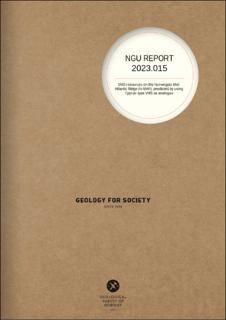| dc.description.abstract | The overall aim of this project has been to generate an objective resource estimate for Seafloor Massive
Sulphide (SMS) ores in the Norwegian part of the Mid-Atlantic Ridge (N-MAR).
The presence and mineability of SMS ores are poorly constrained on a worldwide basis, and this project has
applied well-constrained Cyprus-type volcanic massive sulphides (VMS) as analogues on land for a resource
estimate. Several reports have recently been published with estimates of SMS resources on N-MAR. These
resource estimates are mainly based on a limited number of grab samples, limited geophysics and limited
mapping, a basis which makes the estimates very uncertain. Cyprus is the type-example of an ophiolite
complex and is host to the type-example of the equivalent land-locked VMS deposits. Existing databases on
VMS deposits has been upgraded and only ophiolite-hosted deposits were included using literature and
internet resources, producing a database of 109 deposits with new grade and tonnage data. Fieldwork was
carried out to obtain geochemical data on metals which could be of economic interest in addition to the base
metals.
Monte Carlo simulation was used on data from the main ophiolite districts around the world to obtain
estimates on deposit size and grade, deposit density and tonnage copper. This simulation resulted in a 50th
percentile with a deposit size of 1.47 Mt with 1.47% Cu, and a density of 9.2 deposits/1000 km2, and a
tonnage of 0.18 Mt Cu/1000 km2. The copper tonnage is considerably less than recent estimates for SMS
resources on N-MAR, while the deposit density is similar. Most of the discrepancy is caused by using high
average grades in previous estimates, based primarily on biased surface sampling.
The geochemistry of the Norwegian ophiolite-hosted deposits shows no systematic enrichment in precious
and trace metals, except for elevated values of cobalt. From this, only copper and zinc, and in some cases
cobalt, may be expected to have economic value in SMS deposits. If ultramafic rocks are involved in the
hydrothermal processes, the contents of gold, cobalt, and perhaps copper and nickel, may be higher. | |

